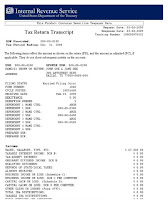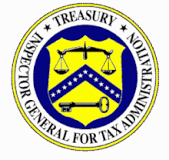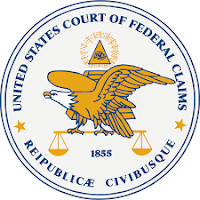As part of its ongoing efforts to protect taxpayers from identity thieves, the Internal Revenue Service today announced in IR-2019-101 on June 4, 2019 that it will stop its tax transcript faxing service in June and will amend the Form 4506 series to end third-party mailing of tax returns and transcripts in July.
Tax transcripts are summaries of tax return information. Transcripts have become increasingly vulnerable as criminals impersonate taxpayers or authorized third parties. Identity thieves use tax transcripts to file fraudulent returns for refunds that are difficult to detect because they mirror a legitimate tax return.
The halt to the faxing and third-party service this summer are two more steps the IRS is taking to protect taxpayer data. In September 2018, the IRS began to mask personally identifiable information for every individual and entity listed on the transcript. See New Tax Transcript and Customer File Number. At that time, the IRS announced it intended to stop its faxing and third-party mailing service, and has since worked with tax professionals to assure they have what they need for tax preparation and representation.
Faxing service ends June 28
Starting June 28, 2019, the IRS will stop faxing tax transcripts to both taxpayers and third parties, including tax professionals. This action affects individual and business transcripts.
Individual taxpayers have several options to obtain a tax transcript. They may:
- Use IRS.gov or the IRS2Go app to access Get Transcript Online; after verifying their identities, taxpayers may immediately download or print their transcript, or
- Use IRS.gov or the IRS2Go app to access Get Transcript by Mail; transcript will be delivered within 10 days to the address of record, or
- Call 800-908-9946 for an automated Get Transcript by Mail feature, or
- Submit Form 4506-T or 4506T-EZ to have a transcript mailed to the address of record.
Tax professionals also have several options to obtain tax transcripts necessary for tax preparation or representation as follows:

- Request that the IRS mail a transcript to the taxpayer’s address of record, or
- Use e-Services’ Transcript Delivery System online to obtain masked individual transcripts and business transcripts, or
- Obtain a masked individual transcript or a business transcript by calling the IRS, faxing authorization to the IRS assistor and the IRS assistor will place the document in the tax practitioner’s e-Services secure mailbox.
- When needed for tax preparation purposes, tax practitioners may:
- Obtain an unmasked wage and income transcript by calling the IRS, faxing authorization to the IRS assistor and the IRS assistor will place the document in the tax practitioner’s e-Services secure mailbox, or
- Obtain an unmasked wage and income transcript if authorization is already on file by using e-Service’s Transcript Delivery System.
Certain third-party mailings stop July 1
Effective July 1, 2019, the IRS will no longer provide transcripts requested on Form 4506, Form 4506-T and Form 4506T-EZ to third parties, and the forms will be amended to remove the option for mailing to a third-party. These forms are often used by lenders and others to verify income for non-tax purposes. Among the largest users are colleges and universities verifying income for financial aid purposes. Tax professionals also are large volume users.
Taxpayers may continue to use these forms to obtain a copy of their tax return or obtain a copy of their tax transcripts. This change will NOT affect use of the IRS Data Retrieval Tool through the Free Application for Federal Student Aid (FAFSA) process.
Third parties who use these forms for income verification have other alternatives. The IRS offers an Income Verification Express Service (IVES) which has several hundred participants, who, with proper authorization, order transcripts. Lenders or higher education institutions can either contract with existing IVES participants or become IVES participants themselves. The tax transcript is an official IRS record. Taxpayers may choose to provide transcripts to requestors instead of authorizing the third party to request these transcripts from the IRS on their behalf.
Tax professionals who are attorneys, Certified Public Accountants or Enrolled Agents (i.e., Circular 230 practitioners) and do not have an e-Services account may create one and, with proper authorization from clients, can access the e-Services’ Transcript Delivery System. Unenrolled tax practitioners must have an e-File application on file and be listed as delegated users to access TDS.
Customer File Number helps match transcripts
Because the taxpayer’s name and Social Security number are now partially masked, the IRS also created a Customer File Number space that can be used to help third parties match transcripts to taxpayers. Third parties can assign a Customer File Number, such as a loan application number or a student identification number. The number will populate on the transcript and help match it to the client/student.
Have a Tax Problem?
Contact the Tax Lawyers at
Marini & Associates, P.A.
for a FREE Tax HELP Contact Us at:
orToll Free at 888-8TaxAid (888) 882-9243

 IRS policy requires examiners to identify the appropriate penalties, determine whether to propose penalties, document the reasoning for proposal or nonproposal, involve supervisors in penalty development, and obtain supervisory approval for the proposal of all penalties and for the nonproposal of the substantial understatement penalty.
IRS policy requires examiners to identify the appropriate penalties, determine whether to propose penalties, document the reasoning for proposal or nonproposal, involve supervisors in penalty development, and obtain supervisory approval for the proposal of all penalties and for the nonproposal of the substantial understatement penalty.
















